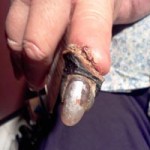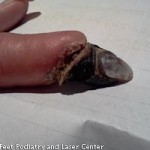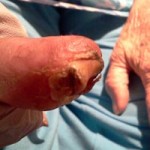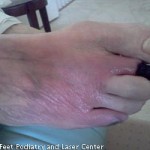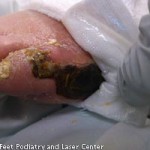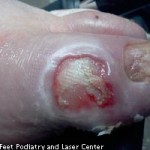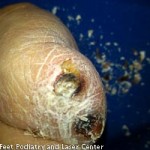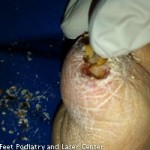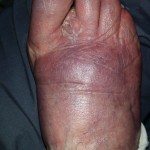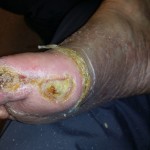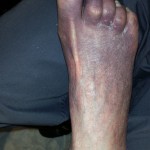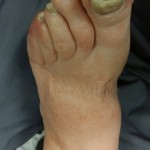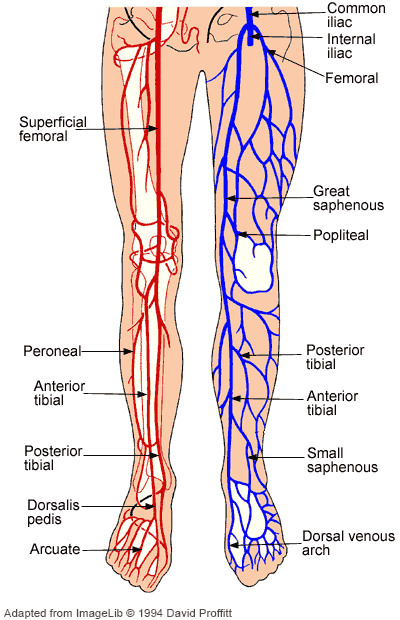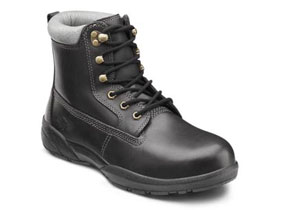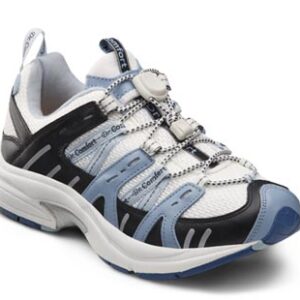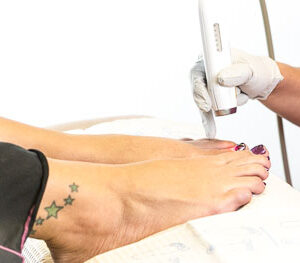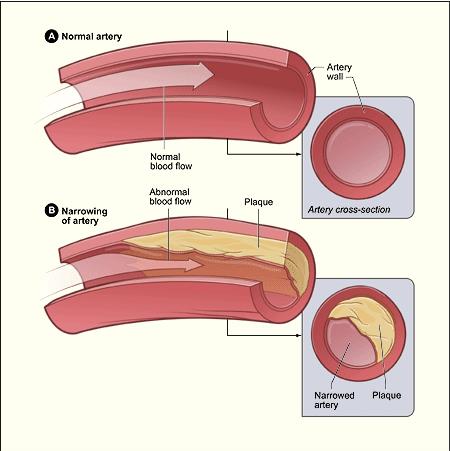
Peripheral Vascular Disease
Peripheral Vascular disease (PVD) or Peripheral Arterial Disease (PAD) are characterized by decreased circulation to the extremities. There are many systemic conditions that can cause or facilitate blockages in the arteries serving blood to the legs, feet, and toes. Symptoms of peripheral vascular disease can include edema, discoloration, cold feet, pain, cramping, night cramps, night pain, claudication (cramping of calves when walking), ulcerations, dry gangrene, pain, and auto amputation. Typically we will find a combination of these symptoms. Peripheral vascular disease predisposes sufferers to infections, ulcerations, amputation, and death.
- Dry Gangrene Finger (2)
- Dry Gangrene Finger Image 2
- Auto amputation of the finger
- Dry Gangrene Toe
- Dry Gangrene Vascular Wound
- Vascular/pressure ulcer L great toe.
- Borderline gangrene
- Vascular wounds of the feet
- Discoloration and edema in vascular compromised
- Vascular wound
- Blue purple discolration associated with decreased circulation
- Pitting edema of the foot with perfect shoe imprint
Evaluation
Non-invasive vascular studies are the simplest and least invasive examinations that can be done to evaluate the circulation to extremities. There are many different studies done to assess the vascular supply including doppler, taking pulses, ankle/brachial index (ABI), plethysmography, capillary fill time, and many others. Some of these test are more reliable than others and some can be miss leading- they must all be looked at and put together like a puzzle. Often times these tests are really just used to see if invasive studies are necessary.
Invasive vascular studies or angiograms are used to diagnose blockages in the vessels serving the legs. Identifying blockages is the first step in correcting the real problems- blockages.
Treatment
The easiest way to improve circulation is EXERCISE!!! Yes, it can be that simple for some. Stay active. Check with your family doctor, tell them, you want to exercise, ask for input and what is safe exercise for you. Get up and move, watch your diet manage systemic problems.
If exercise is not an option for you, you may require the assistance of a vascular surgeon. They can manually open the artery or bypass the blockage in many cases. It is important to note that all surgeries do come with risks including death.

